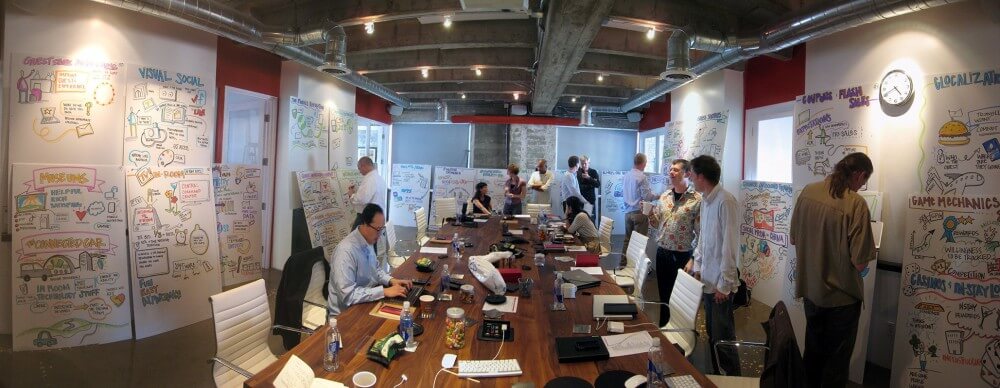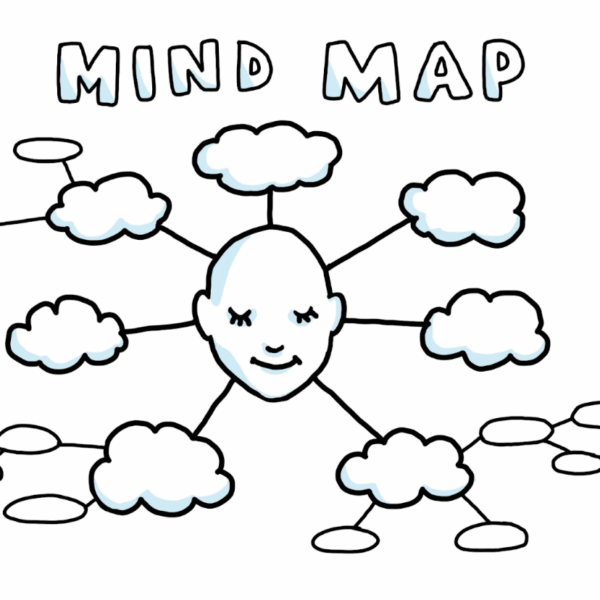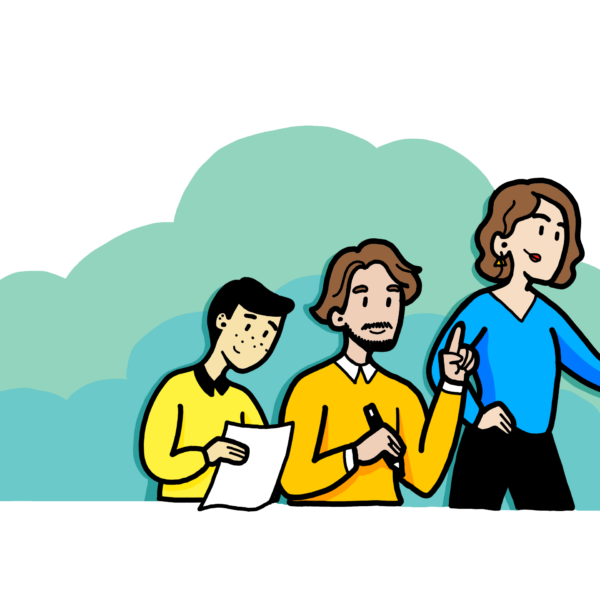
Why do companies like Google, the Gap, Lego and Johnson & Johnson use graphic facilitation? Because they know how valuable their meetings are, and they know how graphic recording helps them get the most from their investment of time, money and talent to get their best people in one room.
At ImageThink, we’ve been privileged to serve as graphic facilitators in hundreds of meetings, many of them in the boardrooms of Fortune 500 companies. Here’s a list of 12 common obstacles to a high-value, high-impact meeting and how graphic facilitation helps overcome each of these meeting problems for more effective meetings.
1. Getting lost in detail.
When issues and ideas are complex, using visual tools to help categorize, prioritize and structure information becomes critical. Graphic recording can help start to pull out the key points of information and map out all of the important pieces. When meeting participants can literally see a graphic representation of the bigger picture along the wall of the room, they can start to think more systematically for a more effective meeting.
2. Lack of participation and engagement.
When the group has a dynamic, graphically-rich mural unfolding before them in real-time, everyone sits up and takes notice which makes for a more effective meeting. Having a graphic facilitator on hand to capture each person’s input has an enormous impact: people feel heard, and it makes them want to share more and be a part of the process. Adding interactive visual tools like sticky notes and dot voting can bring another level of participation to the agenda.
3. Leaving important ground uncovered.
When you map a discussion visually, you have snapshot of the ground that has been covered so far. Almost immediately, you can see which points need to be built out and which have yet to be explored. We can “read” images much faster than text, so the feedback loop is much quicker.
4. Misunderstandings.
Too often when miscommunication happens, it’s the result of conflicting mental models. When that model is represented in images, large on the wall for all to see, there is instant recognition of the differences and similarities. The group can then work out the accurate model on the wall, with the help of their graphic facilitator, so everyone has the same picture in their minds which makes for a more effective meeting.
5. Lack of clear next steps and accountability.
Have you had this experience: a couple of days after a meeting, resolutions and decisions made in the conference room seem to be but a misty memory? When you have a concrete and visual representation, the group has a tangible archive of what was said, and the agreed-upon next steps. If you assign next steps to individuals during the meeting, their name can go right on the chart, it will be very clear who owns which piece of the project.
6. Lack of follow-through on meeting initiatives.
Maybe everyone has a list of decisions that were made in the meeting, but how do you track follow through? Creating a map or timeline in the meeting can be a large visual reminder of the group’s goals, agreements and next steps. The graphic can serve as effective tool to track progress and see where things are or aren’t staying on track.
7. One-upmanship or office politics.
Graphic facilitation has a democratizing effect on the conversation — whether a comment is made loudly or softly, when it’s captured visually the content is what shines through. Everyone is heard equally, and since all of the information is synthesized — not labeled with who-said-what — it belongs to the group as a whole which leads for a more effective meeting for all.
8. Bringing outsiders up to speed on what was covered.
Graphic facilitators create a visual map of the meeting, which provides an incredibly efficient tool for bringing someone who wasn’t in the meeting up to speed on what happened. Unlike regular meeting minutes, graphic recording also captures non-verbal content of the information being discussed — things like emotional content, resonance, questions and priorities.
9. Demonstrating the value of the meeting.
When you want to be able to clearly communicate the value of the content of a high level effective meeting, graphic facilitation is indispensable. Not only does it elevate the outcomes and ideas of the group into a permanent, tangible record, it can form the basis of presentations, reports and other takeaways that extend the meeting’s impact.
10. Lack of creative energy or ideas.
Drawing out a conversation on the wall encourages non-linear thinking — participants quickly make connections and find patterns that spark new ideas.
11. Prioritizing among many ideas.
Once ideas are up on the wall, a group can quickly begin to see hierarchies and connections that help in prioritizing. Using graphic facilitation tools and other meeting ideas such as sticky notes and dot stickers, ideas can be grouped according to different criteria, placed on a timeline, and even voted on to get an instant visual of where consensus is emerging.
12. Language and cultural barriers.
Do people literally or figuratively come from different worlds — either geographically or functionally? A graphical translation of content helps bridge those cultural and language differences in an effective and non-threatening way that strengthens mutual understanding.
When the meeting really matters, graphic recording and facilitation will make your meeting more effective and productive.
Have an important meeting coming up? Get in touch with us — we’d be happy to brainstorm ways graphic facilitation may be able to support your meeting objectives for a more effective meeting.

